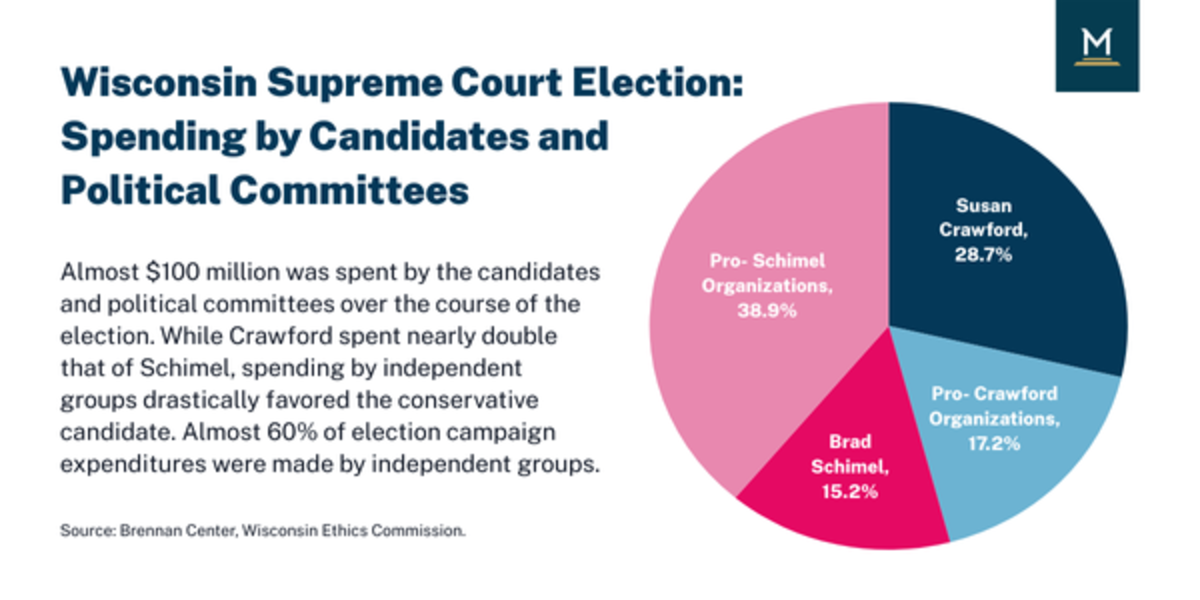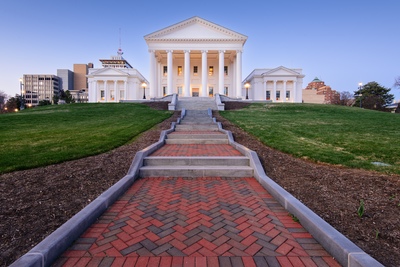
State Government Affairs, Elections & Campaigns
How Lieutenant Governors Are Selected (And Why It Matters)
December 10, 2025 | Bill Kramer
April 11, 2025 | Sandy Dornsife

Key Takeaways:
Generally, state supreme court elections do not draw national attention, however, the state supreme court election in Wisconsin did just that. After months of political maneuvering and significant campaign spending, liberal Susan Crawford beat out conservative Brad Schimel in the election to fill the seat of retiring state Supreme Court Justice Ann Walsh Bradley. While this hotly contested election creates inherent policy consequences in a state with a Democratic Governor and a Republican-controlled legislature; it also has significant repercussions that reach far beyond the state borders.
Wisconsin’s state supreme court is composed of 7 justices who are elected for 10-year terms. While conservatives had enjoyed a long tenure as the majority in the court, the election of Judge Protasiewicz in 2023 flipped the Court’s makeup to a 4-3 liberal majority and marked the first time in fifteen years that the balance of power had shifted. As a result, conservatives were excited to hear of the 2025 retirement of the liberal-leaning Judge Ann Walsh Bradley. Adding to the stakes was the pivotal timing of the opportunity.
The Court is due to hear the case of Planned Parenthood v. Urmanski in the next few months, a case challenging Wisconsin’s 176-year-old ban on abortions. Plaintiffs in this case argue that the ban, which prohibits all abortions except “to save the life of the mother,” is a violation of the state constitution’s equal rights protections. While liberal Judge Crawford has a track record supporting abortion rights; conservative Schimel previously argued that the 1849 law was valid. However, he recently stated that the decision regarding abortion should be left to the voters. Additionally, several other politically charged issues are likely to appear before the court in the next year, including voter redistricting which could help Democrats in their quest to regain the majority in the U.S. House of Representatives.
In addition to the major policy implications, the Wisconsin Supreme Court election offered one of the first opportunities since the general election to test each party’s rallying power. Conservatives hoped to ride the momentum of massive wins in November, while Democrats tested their ability to put up a concerted resistance. As a result, money poured into the state from all over the country, making it the most expensive judicial election in the history of the country.

Almost $100 million was spent by the candidates and political committees over the course of the election; nearly double the amount spent in the 2023 judicial election which, itself, had shattered all previous records. While Crawford spent nearly double that of Schimel, spending by independent groups drastically favored the conservative candidate. Almost 60% of election campaign expenditures were made by independent groups, leaving critics to allege that the court seat was up for sale. Elon Musk, a steadfast proponent of the Trump Administration’s policies and leader of the Department of Government Efficiency, took a particular interest in the race, pouring an estimated $20 million into the campaign for the conservative candidate. Mirroring his offer in Pennsylvania during the general election, he also offered Wisconsinites $100 to sign a petition to “reject activist judges” and gave away multiple one million dollar checks to individuals who voted in the election, despite several unsuccessful legal challenges.
Over the past several months, the Trump Administration has increasingly criticized the role of the judicial system as a check on executive power. In a climate where a District Court judge can be thrust into a much broader political conflict, it is no wonder that the election of a judge for the highest court in Wisconsin would draw the attention of political power players from outside the state. With three members of the Pennsylvania Supreme Court, all of which are Democrats, running for re-election in November 2025, it is safe to say that Pennsylvania will be the next state to serve as a national partisan battleground. Without significant campaign funding reforms, the Wisconsin spending record may only be the beginning.

December 10, 2025 | Bill Kramer
-238a17-400px.jpg)
December 10, 2025 | Bill Kramer

November 5, 2025 | Bill Kramer